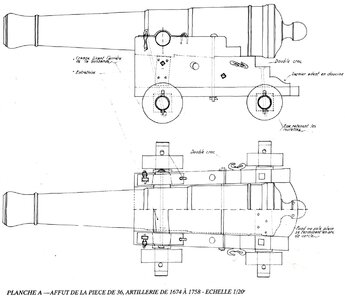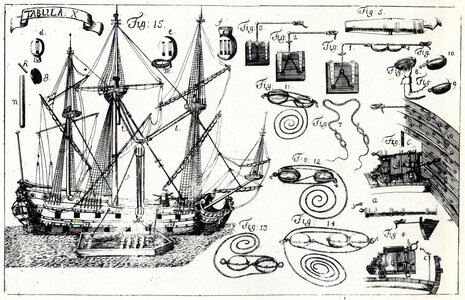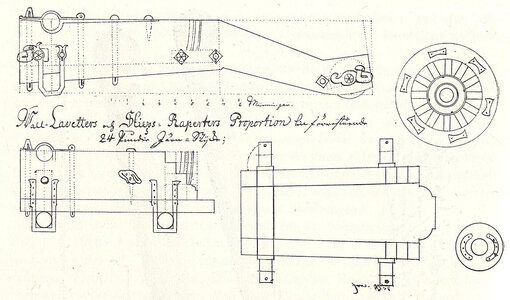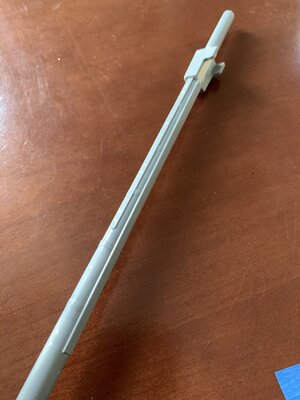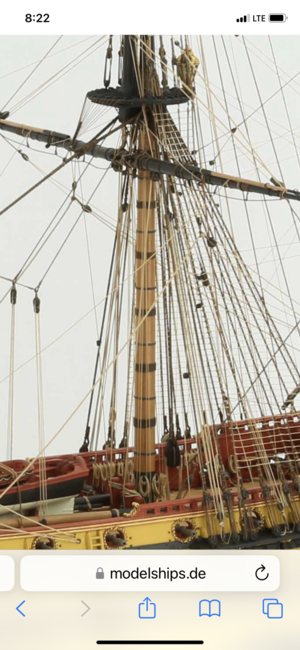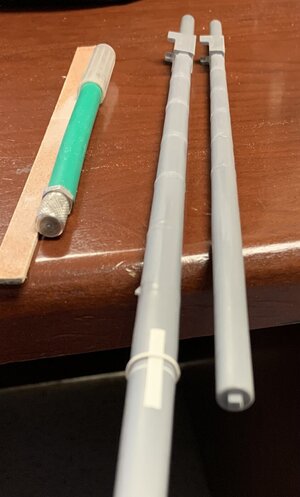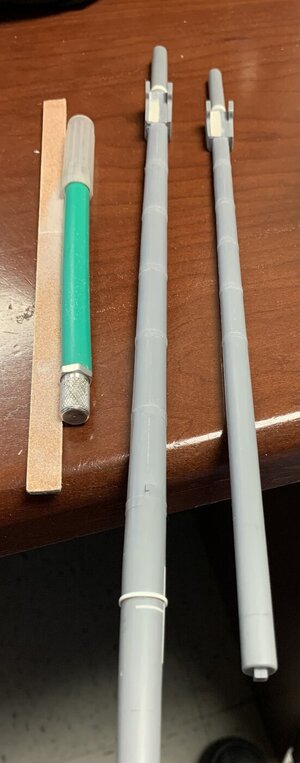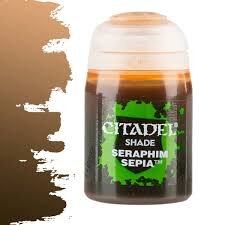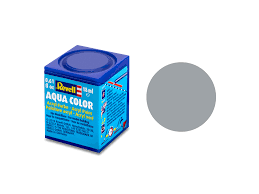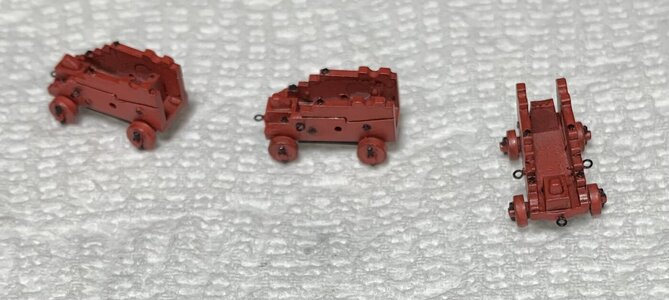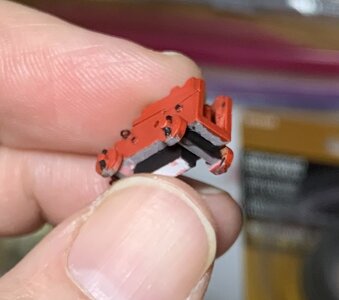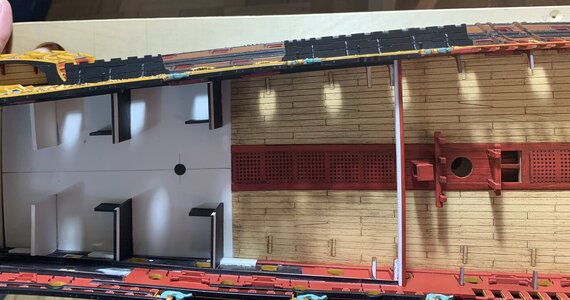Waldemar, yes, all sources of information are welcome. I will say, though, that while I am aware of the Heller trunnion issue, it is not one that I am likely to correct. I haven’t 100% ruled it out, but I suppose I will revisit that in the near future. I will fit breaching ropes and haul-out tackles, but I will omit the haul-in tackle at the rear of the carriage because I think it makes the decks look very busy. I will position the ring bolts in the binding strakes, though.
Nigel, I may indeed have to shift a few deadeye locations. That forward deadeye is partially the angle of the shot, but it is close to where the barrel will be. There’s a definite conflict on the main channel, though.
As for channel locations of three- deckers in 1693, I can’t say for certain, but by this point it seems the French had shifted the channels to below the main deck guns.
Early RL or SR, circa 1680:
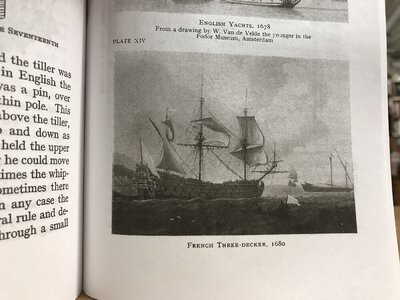
Monarque around 1668:

RL, circa 1692:
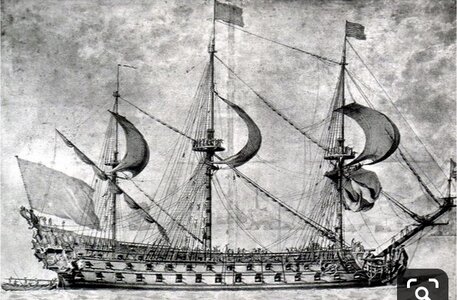
Possibly a 2nd marine battle scene with an un-identified French vessel:
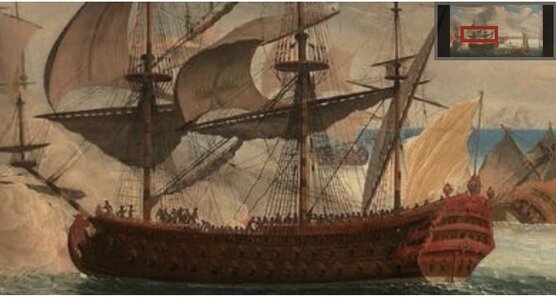
SR as depicted on the Velez Malaga scroll:
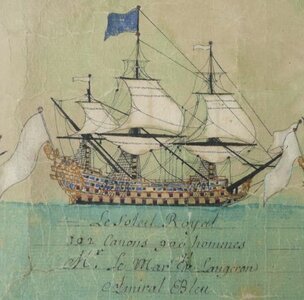
I have a few other examples that seem to corroborate this, but it is admittedly not much to go on.
Nigel, I may indeed have to shift a few deadeye locations. That forward deadeye is partially the angle of the shot, but it is close to where the barrel will be. There’s a definite conflict on the main channel, though.
As for channel locations of three- deckers in 1693, I can’t say for certain, but by this point it seems the French had shifted the channels to below the main deck guns.
Early RL or SR, circa 1680:

Monarque around 1668:

RL, circa 1692:

Possibly a 2nd marine battle scene with an un-identified French vessel:

SR as depicted on the Velez Malaga scroll:

I have a few other examples that seem to corroborate this, but it is admittedly not much to go on.






